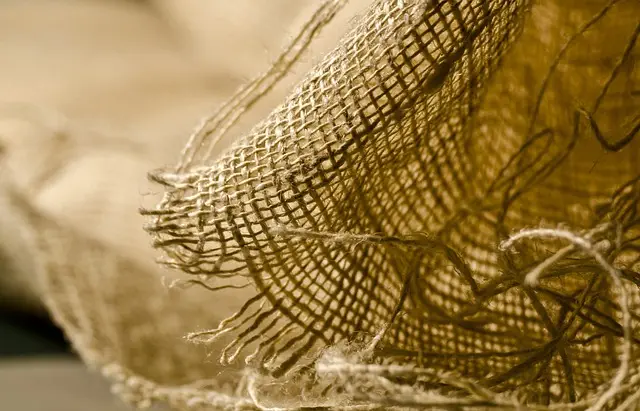Maeng Da Kratom, a potent strain from Southeast Asia with robust leaves and a rich alkaloid profile, is known for its invigorating effects even at lower doses compared to Red Bali Kratom. It's favored for sustained energy and focus due to its higher alkaloid density, which provides a more energetic experience without significant sedation. In contrast, Red Bali Kratom, named for the Indonesian island it comes from, offers relaxing and mood-enhancing effects, ideal for stress relief and anxiety management. The differences in their experiences stem from varying levels of 7-hydroxymitragynine and distinct environmental influences on their alkaloid compositions. Users often explore both Maeng Da and Red Bali Kratom to find the strain that best suits their wellness objectives, whether it's for an energizing focus or a calming pain relief. When comparing Maeng Da vs. Red Bali, it's crucial to consider how each strain's unique characteristics are shaped by factors like geographic origin and cultivation methods, which in turn affect their individual potency and effects.
explore the unique properties of Maeng Da Kratom Powder, a botanical powerhouse often contrasted with Red Bali. This article delves into the comparative potency of these two strains through a detailed analysis, elucidating the nuanced effects that distinguish Maeng Da from Red Bali. We will navigate the alchemy behind their distinct experiences and the specific factors influencing the nature of each strain. For those curious about Maeng Da vs Red Bali, this piece serves as an informative guide to understanding the differences in experience and potency.
- Unveiling the Potency of Maeng Da Kratom Powder: A Comparative Analysis with Red Bali
- The Alchemy of Effects: Maeng Da vs. Red Bali – Understanding the Differences in Experience
- Navigating Strain Specificity: Factors Influencing the Distinctiveness of Maeng Da and Red Bali Kratom Powders
Unveiling the Potency of Maeng Da Kratom Powder: A Comparative Analysis with Red Bali

Maeng Da Kratom Powder, a strain derived from the Mitragyna speciosa tree native to Southeast Asia, is renowned for its potent alkaloid profile and distinct effects. Often celebrated for its energizing properties, Maeng Da, which translates to “Pimp Leaf” due to its larger and more robust leaves, has garnered a significant following among users seeking a balanced experience. When comparing Maeng Da to Red Bali Kratom, it’s evident that while both are potent, the effects of Maeng Da tend to be more stimulating at lower doses, making it a popular choice for individuals who require both energy and focus during their day-to-day activities. The alkaloid composition in Maeng Da is richer and more concentrated, which can contribute to its perceived strength relative to Red Bali. Users frequently report that Maeng Da Kratom Powder offers a smoother experience with less likelihood of causing sedation at moderate doses, setting it apart from the more sedating properties often associated with Red Bali. This comparative analysis highlights the nuanced differences in the effects and user experiences between Maeng Da and Red Bali, with Maeng Da typically favored for its invigorating and fine-tuned stimulating qualities that can be harnessed throughout the day.
The Alchemy of Effects: Maeng Da vs. Red Bali – Understanding the Differences in Experience

Maeng Da Kratom powder and Red Bali Kratom are both well-regarded in kratom communities for their distinct effects, which can be attributed to various alchemical factors including the strain’s origin, the alkaloid composition, and the processing methods. Maeng Da, meaning “Pimp Leaf” in Thai, is a hybrid strain that is believed to offer a more potent and stimulating effect than many other kratom strains due to its higher alkaloid content, particularly 7-hydroxymitragynine, which is thought to contribute significantly to the plant’s psychoactive properties. Users often report that Maeng Da provides a balanced blend of both stimulation and pain relief, making it a versatile choice for those seeking energy and focus alongside analgesic benefits.
In contrast, Red Bali Kratom is named after the Balinese island where it is primarily sourced from. This strain is recognized for its sedating and soothing effects, which are often preferred by individuals looking to unwind or manage anxiety. The alkaloid profile of Red Bali may contain less 7-hydroxymitragynine compared to Maeng Da, which could explain the differing experiences between the two strains. Additionally, the region’s environmental conditions and the specific cultivation techniques can influence the alkaloid levels and, consequently, the effects of Red Bali Kratom. Users typically describe the experience as calming and euphoric, with a strong emphasis on pain relief and relaxation rather than stimulation. When comparing Maeng Da vs. Red Bali, it’s clear that while they share some similarities due to their kratom lineage, their distinct effects are shaped by the unique alchemy of each strain’s growth and processing. Users may experiment with both to find the one that best suits their needs, whether it be for energy, focus, relaxation, or pain management.
Navigating Strain Specificity: Factors Influencing the Distinctiveness of Maeng Da and Red Bali Kratom Powders

Maeng Da and Red Bali Kratom powders are two of the most popular strains within the kratom community, each offering distinct effects due to their unique compositions and origins. The specificity of these strains is influenced by various factors, including the geographical location where the Mitragyna speciosa trees grow, the soil composition, climate conditions, and the methods used in harvesting and processing the leaves. Maeng Da, often referred to as “Pimpakuak,” translates to “Horse Stomach,” which indicates its strength and potency. This strain is typically cultivated in Thailand and is known for its high alkaloid content, particularly mitragynine and 7-hydroxymitragynine, which are the main active compounds in kratom. The leaves of Maeng Da are handpicked and sun-dried to preserve their alkaloid levels. On the other hand, Red Bali Kratom comes from various regions across Bali and neighboring islands, where the climate and soil vary significantly. This diversity can affect the alkaloid profile and the potency of the powder, resulting in a different experience for users compared to Maeng Da. The Red Bali is known for its balancing effects, offering both relaxing and energizing properties, which can be beneficial for individuals seeking relief from stress or pain while maintaining cognitive function. When comparing Maeng Da vs Red Bali, it’s the subtle nuances in alkaloid concentration and the environmental factors during cultivation that differentiate these strains, making each strain a unique experience for users. Understanding these differences is crucial for consumers to make informed decisions based on their preferences and desired effects.
Maeng Da Kratom Powder stands out in the realm of botanical supplements, particularly when juxtaposed with Red Bali. This article has delved into the nuances differentiating Maeng Da from its counterpart, offering a comprehensive analysis of their effects and the factors influencing their distinct characteristics. The potency and unique properties of Maeng Da have been highlighted in comparison to Red Bali, providing readers with a clear understanding of what sets these strains apart. For those interested in exploring the benefits of kratom powders, this comparative exploration of Maeng Da vs Red Bali is invaluable. In conclusion, discerning users seeking a potent and distinct experience may find Maeng Da Kratom Powder to be a superior choice based on its alkaloid composition and the user’s specific needs and preferences.






